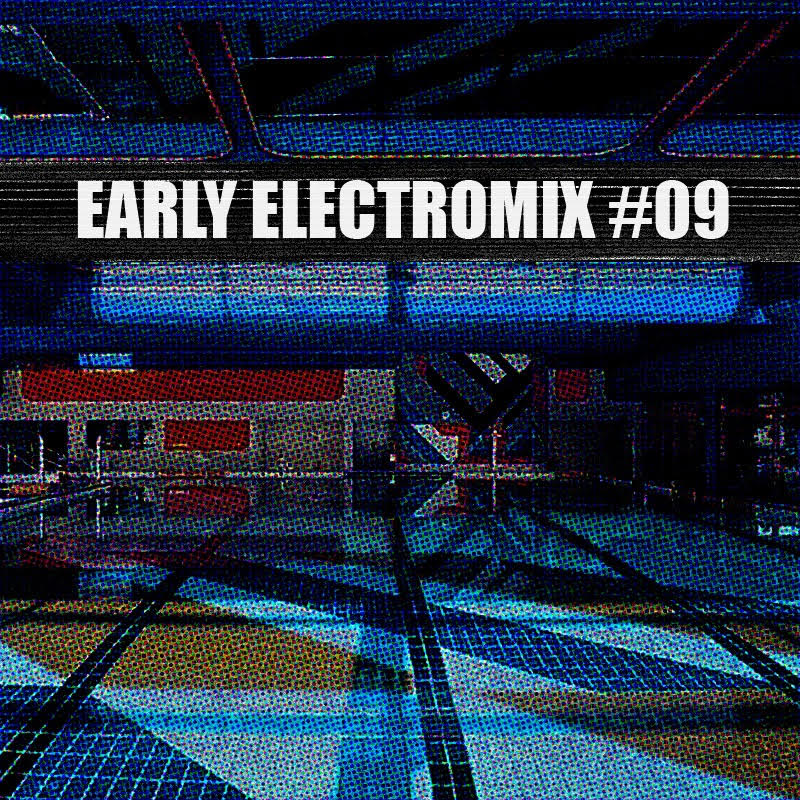ARCHIVE
Early ElectroMix 9 image. (Image)
Early ElectroMIX #9
Early ElectroMIX is a series to document the history of experimental Electronic music from the 50s to the 80s in hope that these pioneers may not be forgotten.
Michel Chion - Kyrie Eleison (1978 / Empreintes DIGITALes) 00:00 > 01:35
Michel Chion began to work for the ORTF (French Radio and Television Organization) Research Dept. in 1970, where he was assistant to Pierre Schaeffer at the Paris’ Conservatoire national de musique, producer of broadcasts for the GRAM, and publications director for the Ina-GRM, of which he was a member from 1971 to 1976. He composed musique concrète works in the studios of the GRAM including « Requiem » whose Kyrie Eleison comes from.
Hugh Le Caine - Dripsody (1955 / JWD) 01:20 > 02:46
A genuine pioneer who developed an early electronic synthesizer in the 1940s - the « electronic sackbut » whose controller modified volume, pitch, and timbre. Thus it was one of the first electronic instruments to use a three-dimensional continuous controller to modify the sound in a live situation. Such control is still rare in electronic instruments. After the success of public demonstrations of his instruments, he was permitted to move his musical activities to the National Research Council of Canada (NRC) and to work on them full-time in 1954, where he gained funding in order to open ELMUS, the Canadian Electronic Music Laboratory. Over the next twenty years, he built over twenty-two different new instruments and helped Canadian universities establish their own studios in the new electronic music medium.
Thomas Hamilton - Fatehpur (1976 / Mental Experience) 02:28 > 07:55
Tom Hamilton’s first effort is to be remembered as a masterpiece in the use of the legendary ARP 2500 synth. Tom has worked on almost all of the Robert Ashley CDs and tours since 1990. Overall his name appears in the credits of about 60 CDs to date and recently I have highly enjoyed his duo with Miguel Frasconi.
Ilhan Mimaroglu - Wings of the Delirious Demon (1972 / Finnadar) 06:15 > 21:07
During the 60's Turkish born musician and composser Ilhan Mimaroglu studied at the Columbia-Princeton Electronic Music Center, worked with contemporaries Edgard Varese and Stefan Wolpe and compossed music for a body of work by Jean Debuffet. Wings of the Delerious Demon... was released in 1972 on his own private press label Finnadar Records. Most of the pieces within are early explorations with processing the clarinet through synthesizer filters, creating new organically charged analog sounds with a rich human breath-like undertone. Synth explorations sweep throughout the album, with bits of crashing sound collage-esque moments of spontanious beauty.
Éliane Radigue – L'Île Re-Sonante (2005 / Shiiin) 15:48 > 38:49
Although this work is from 2000 Eliane Radigue studied electroacoustic music techniques with Pierre Schaeffer at Radiodiffusion-Télévision Française (RTF) and worked as Pierre Henry's assistant at the Studio Apsome from 1967 to 1968 and became a master in the use of the ARP 2500 Synth. She works with electronic sounds on tape to create an ambience within which sound seems to move in a continual flow around the listener.
Klaus Hashagen - Trip In The Air (1970 / Colosseum) 34:25 > 54:34
German composer who developed a great interest in electronics and played a lot, most notably with the Ars Nova Ensemble outta Nürnberg. He had released a song on a compilation from Deutsche Grammophon’s prestigious series "Deutsche Musik Der Gegenwart » documenting the Contemporary music of today but I favorited this one for Percussions and Electronic.
Mauricio Kagel - Antithèse (1962 / Discos Siglo Veinte ) 51:48 > 01:00
Mauricio Kagel originated from Buenos Aires/Argentina and was a very distinctive composer of contemporary music.
From the very beginning his name has been associated above all with music theatre, the genre in which he has perhaps exerted the greatest impact.
Kagel's creative output is remarkable: it encompasses not only stage, orchestral and chamber music in an extremely wide range of instrumental settings, but also film scores, radio plays and essays.



